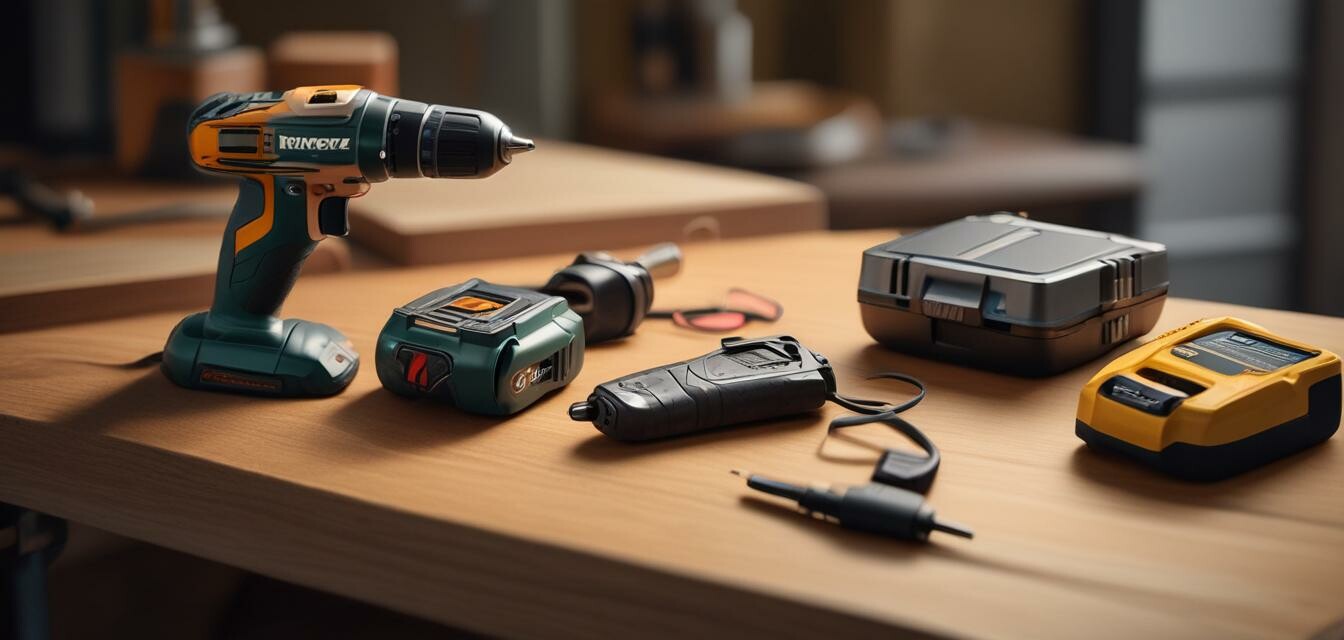
Innovation Spotlight: Wireless Charging Power Tools
- Wireless charging technology is revolutionizing power tools.
- Benefits include increased convenience, reduced downtime, and enhanced tool lifespan.
- This trend is beneficial for contractors and DIY enthusiasts seeking better efficiency.
- Staying informed on technological advancements can impact purchasing decisions.
The world of power tools is experiencing a significant transformation with the emergence of wireless charging technology. This innovation promises not only to enhance convenience but also offers numerous potential benefits for contractors and DIY enthusiasts. In this article, we will explore the trend of wireless charging for portable power tools and examine what it means for the industry and consumers alike.
What is wireless charging technology?
Wireless charging technology, also known as inductive charging, allows devices to be recharged without the need for physical power connections. This is achieved through electromagnetic fields, enabling tools to charge simply by resting on compatible charging pads or docks. For power tools, this means less hassle and fewer cords to manage.
Benefits of wireless charging for power tools
As the trend of wireless charging gains momentum, several key benefits have become evident:
- Increased convenience: No more fidgeting with tangled cords or searching for outlets.
- Reduced downtime: Quick and easy recharging allows you to get back to work faster.
- Improved durability: Elimination of physical charging ports can lead to fewer wear-and-tear issues.
- Enhanced tool lifespan: Continuous charging can help avoid deep discharges and extend battery life.
Comparison of wireless charging vs. traditional charging
| Criteria | Wireless Charging | Traditional Charging |
|---|---|---|
| Convenience | High - simply place tool on dock | Medium - requires plugging and unplugging |
| Charging Speed | Varies, generally slower | Usually faster with direct connection |
| Durability | Better - fewer physical connections | Lower - wear and tear on ports |
| Cost | Higher initial investment | Typically lower upfront costs |
Understanding the technology behind wireless charging
The underlying principle of wireless charging revolves around two components: a transmitter (charging pad) and a receiver (device). The transmitter generates an electromagnetic field that the receiver captures and converts back into electrical energy, thus charging the device. This technology is steadily advancing, making it more accessible for various tools in the market today.
Market trends and consumer interest
The rise of wireless charging power tools has sparked considerable interest among consumers. Market research indicates a growing demand for tools that offer this feature, as it aligns with the modern-day preference for convenience and efficiency. With major brands investing in R&D, the future of wireless charging tools looks promising. To learn more about current power tool trends, check out our News and Trends section.
Challenges and considerations
While the benefits are numerous, it's essential to acknowledge potential challenges:
- Charging speed: Wireless charging may be slower than traditional methods, which could impact busy professionals.
- Cost: The initial investment for wireless tools may be higher due to advanced technology.
- Compatibility concerns: Not all tools may be compatible with every charging dock, requiring careful product selection.
Future outlook for wireless charging in power tools
As the technology matures, we expect to see improvements in charging speeds and efficiency, making wireless charging a more attractive option. Additionally, specialization in designs catering to diverse user needs will likely increase, making them suitable for a range of industries.
Key players in wireless charging power tools
Several major brands are leading the charge in integrating wireless charging into their product lines. It is crucial for consumers to pay attention to these advancements to make informed purchasing decisions. To understand more about product lines available, visit our Cordless Drills and Multi-Tools pages.
Pros
- Eliminates clutter and cord management.
- Convenient charging method with simple placement.
- Lengthens the lifespan of tool batteries.
- Reduces the wear on connectors and charging ports.
Cons
- Generally slower charging times compared to traditional methods.
- Higher costs may deter budget-conscious consumers.
- Compatibility issues with existing tools may arise.
Conclusion
Wireless charging power tools represent an exciting shift in the industry, offering numerous benefits for users. As technology continues to evolve, staying informed will be crucial for contractors and DIY enthusiasts alike. By embracing this innovation, you can not only enhance your efficiency but also leverage the latest advancements available in the market today. To discover more about portable power tools, visit our main site on Portable Saws.
Tips for beginners
- Research brands that offer wireless charging options.
- Compare tool compatibility before purchasing.
- Consider investing in a multipurpose charging dock to save space and enhance convenience.
- Stay updated on new product releases through our Buying Guides.
